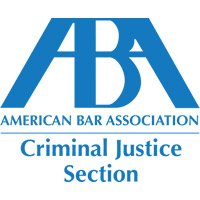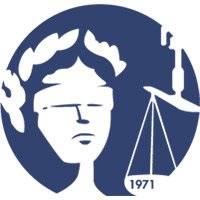RULE OF COMPLETENESS
REMAINDERS OF OR RELATED WRITINGS OR RECORDED STATEMENTS (“RULE OF COMPLETENESS”) [FED. R. EVID. RULE 106]
When a recorded statement or a portion thereof is introduced in writing, the adverse party may “require at that time” the admission of any other part or any other writing or statement which ought in fairness be considered contemporaneously with it.
See U.S. v. Burns, 163 F.3d 840 (5th Cir. 2003) [holding that in addition to ensuring that court has adequate representation of declarant’s statement, rule of completeness, which allows opponent against whom part of utterance has been put into evidence to put in remainder of utterance, guards against danger that out-of-context statement may create such prejudice that it is impossible to repair by subsequent presentation of additional material];
U.S. v. Branch, 91 F.3d 699 (5th Cir. 1996) [holding that the “rule of completeness,” is to permit contemporaneous introduction of recorded statements that place in context other writings admitted into evidence which, viewed alone, may be misleading];
U.S. v. Bacon, 602 F.2d 1248 (7th Cir.), cert. denied, 444 U.S. 967 [the remainder of witness’ statement supporting witness’ testimony on direct is admissible after portions of the statement are used for impeachment on cross- examination by the defense];
U.S. v. Weisman, 624 F.2d 1118 (2d Cir.), cert. denied, 449 U.S. 871 (1980) [entitled to offer other portion of tapes only where same explain or rebut the matters contained in the offered portions or are “necessary to clarify or make not misleading that which is introduced”];
The court makes the determination as to what is “closely related”. U.S. v. Burreson, 643 F.2d 1344 (9th Cir.), cert. denied, 454 U.S. 847 (1981). Thus the accused may be entitled to offer even otherwise inadmissible statements contained in related tape recordings under FED. R. EVID. Rule 106; U.S. v. Sutton, 801 F.2d 1346 (D.C. Cir. 1986) [it was error not to admit recorded conversations wherein Defendant made self serving statements which were otherwise inadmissible hearsay under R. 106, same found, although “harmless error”].
The Rule’s requirement that the related recording be admitted “at that time,” may entitle a party to interrupt the others side’s presentation. U.S. v. Maccini, 721 F.2d 840 (1st Cir. 1983)
[permitting prosecutor to interrupt defense counsel’s cross-examination of a witness to allow reading of prior testimony].
But see U.S. v. Garrett, 716 F. 2d 257 (5th Cir. 1983)[court excluded portion of tape recording offered by a defendant on grounds its prejudice outweighed any probative valued under Rule 403].
See also U.S. v. LeFevour, 798 F.2d 977 (7th Cir. 1986) [dicta relating to recorded statement of government informant offered by defendant to supplement his recorded conversation offered in its entirety by the government].
Likewise, when defense counsel uses a portion of a report or statement to impeach a witness he or she runs the risk that the court will admit the entire statement (which is generally prepared by government witnesses and agents for the purpose of burying Caesar, not to help him) under Rule 106.
See U.S. v. Jamar, 561 F.2d 1103, 1108-09 (4th Cir. 1977);
U.S. v. Baron, 602 F.2d 1248 (7th Cir.), cert. denied, 100 S.Ct. 456 (1979);
U.S. v. Rubin, 609 F.2d 51, 63 (9th Cir. 1979).
The rule is equally helpful to the defense. For example, it is error for a trial court to refuse a defendant the opportunity to play portions of a tape recording when it helped explain why he had knowledge of certain facts contained in a subsequent recorded conversation offered by the government. U.S. v. Sweiss, 800 F.2d 684 (7th Cir. 1986) [noting, however, accused waived any error by failing to explain theory under which such evidence was admissible]; see also FED. R. EVID. Rule 103(b); U.S. v. Bacon, 602 F.2d 1248 (7th Cir. 1979).
TEXAS RULE 106
The Texas “Rule of Completeness” is identical to the Federal Rule except that it expressly states that a [w]riting or recorded statement includes depositions. See Roman v. State, 503 SW.2d 252 (Tex.Cr.App. 1974) [prior “Rule of Completeness” doctrine in Texas].
TEXAS RULE 107
RULE OF OPTIONAL COMPLETENESS
Texas Rule 107 establishes that whenever a portion of an act, declaration, conversation, writing or recorded statement is offered by one party, the party against whom such statement is offered has a right to offer in evidence any other act, declaration, conversation, writing or recorded statement which is necessary to make the situation fully understood. Thus an adverse party who seeks to introduce the remainder of a matter encompassed by the rule need not interrupt his adversary’s case to introduce the same, but may rely on Rule 107 to introduce it at a later, more effective, time. Typically, this rule allows the admission of otherwise inadmissible evidence which the opponent has Aopened the door regarding. There is no corresponding rule in the Federal Rules of Evidence.











